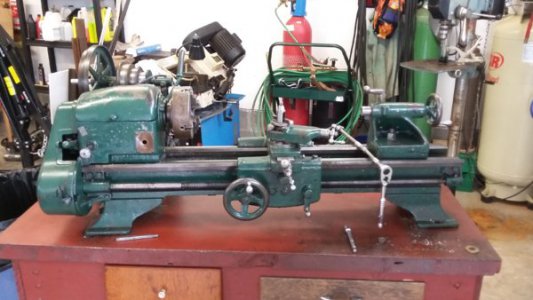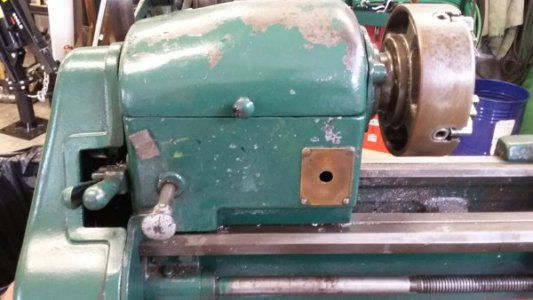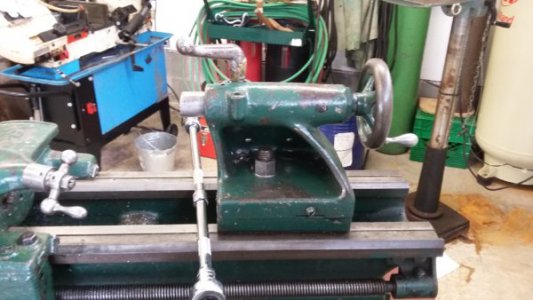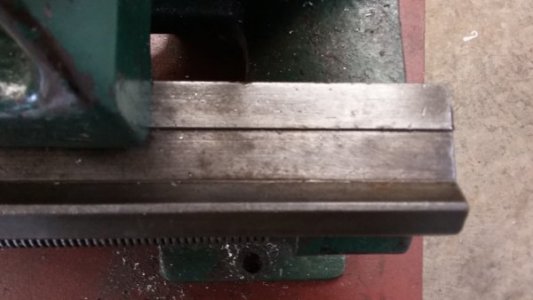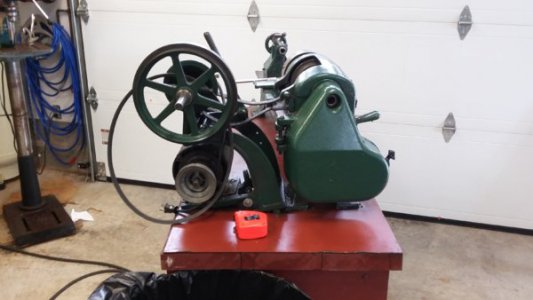silverhawk in my initial post I put the serial number that I found under the tailstock.. 2646 no letters. here are some pics... notice where the on/off switch was once located to the left of the chuck in the casting... can anyone give me any info on this model?
I had assumed that was a casting number of the tailstock or bed, simply because it is a four digit number. If that is indeed the serial number, your lathe is circa 1913/1914. By 1920, serial numbers were five digits. In the case of a 1913/1914, it will NOT fit anything 9/10k that you see on eBay, as yours is considered a "heavy 9", or a "wide 9". The bed will be closer to a 10L (also called a "heavy 10"), but not everything is interchangeable. You may find a 9" "Junior" to be what you have.
In your pictures, I do not see the serial number stamped into the ways. When we get to prior to 1925, my knowledge vaporizes.
The 9/10k lathes started to come into being during the depression when South Bend was trying to stay in business. Mid 30's saw gear pitches change from 16dp to 18dp, bed widths reduced to save costs, the introduction of new "economical" casting materials, and changes to the finishes (expensive "japanning" finishes were replaced).
The late 30's saw other changes such as bore sizes of gears. These are advertised as the "new tool room lathes", and these are what the 9 a/b/c models are compatible with.
Typically, the gear cover would have a brass plate indicating the model. The serial numbers prior to the new tool room lathes did not include any model information, so a serial will only help to contact Grizzly. They would possibly be able to look up the serial and email you a scan of the model card that South Bend had. To me, it was a $25 charge for some good information, as they also had a copy of the ledger sale. It was worth it because I did not have the brass tag, and told me what I needed to get parts on eBay. Richard, the individual handling that for Grizzly, is a good guy to work with.


